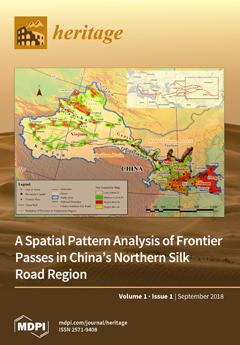Biological profile estimation is an important task of biological and forensic anthropologists. This includes sex, age, ancestry, and body morphology. In bioarchaeology, the biological profile is useful to analyze paleodemography, secular trends, paleopathology, and genetic processes, for example. Foot dimensions, footprints, and shoeprints
[...] Read more.
Biological profile estimation is an important task of biological and forensic anthropologists. This includes sex, age, ancestry, and body morphology. In bioarchaeology, the biological profile is useful to analyze paleodemography, secular trends, paleopathology, and genetic processes, for example. Foot dimensions, footprints, and shoeprints can vary according to stature, age, sex, and body weight. The objective is to estimate these parameters in possible
laterarii (brickworkers) from five footprints and seven shoeprints found in Roman bricks from
Bracara Augusta. Estimation methods were applied to footprint and shoeprint measurements concerning foot length, foot breath, heel breadth, and length from heel to each finger. Three non-adult individuals were aged 1 to 4/5 years and were between 79.7 and 112.5 cm (±7.7 cm) tall. Five adults were likely female individuals, with statures between 144.2 and 159.9 cm. Methods were selected from samples preferably biologically similar to Portuguese people. This pioneer analysis provides biological insight on the
Bracara Augusta laterarii and the population inhabiting Northwestern Iberia during Roman times. As a result of taphonomic constraints (cremation, soil acidity, and humidity), coeval osteological materials are hardly recovered, which further increases the relevance of this approach. Future research on methods based on Portuguese foot dimensions is essential.
Full article





